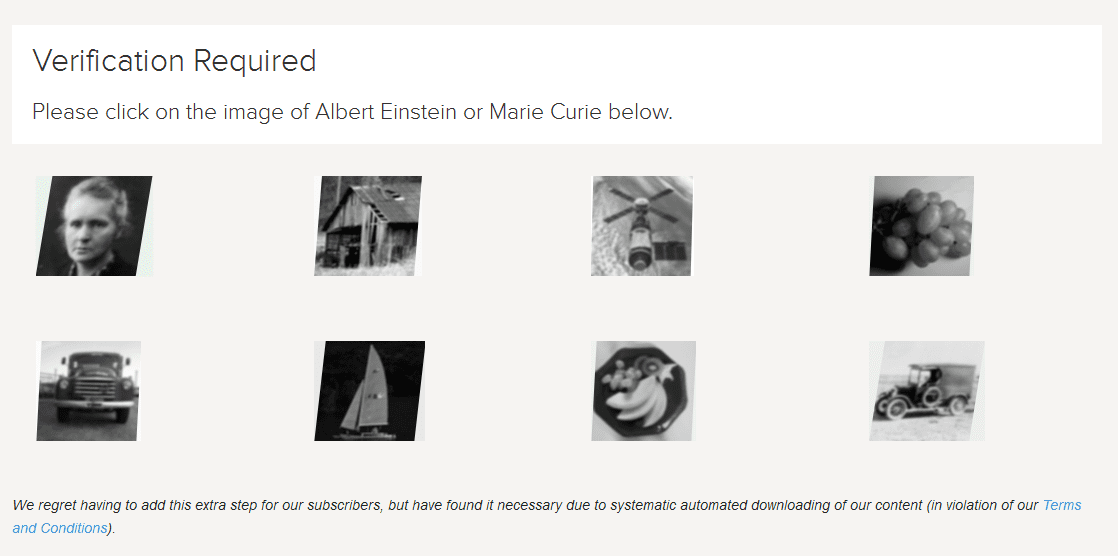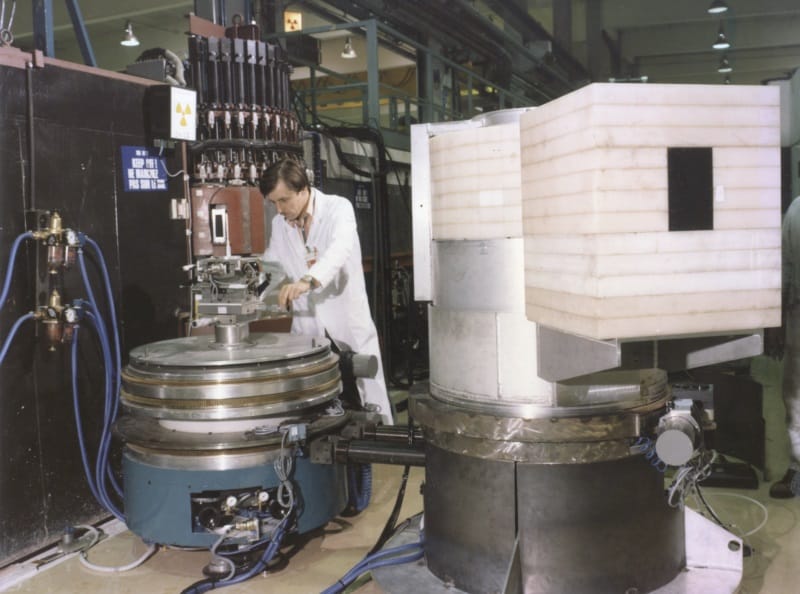
By Sarah Tesh
Avid readers of the Physical Review series of journals will be used to clicking on a photograph of Albert Einstein before downloading papers. This is a security feature designed to stop robots from the mass downloading of papers. Now, the American Physical Society – which publishes the journals – has added a photograph of Marie Curie to the anti-robot system. The addition of a famous female physicist was the idea of Anna Watts, who is an astrophysicist at the University of Amsterdam. She has since Tweeted “This makes me incredibly happy.”
Happy 50th birthday (for yesterday) to the Institut Laue-Langevin (ILL). Since being founded half a century ago in Grenoble, France, the neutron-beam facility has hosted 120,000 visiting scientists from 45 different countries. The reactor actually started running in 1971 and it is still Europe’s leading centre for neutron science. As funding is secured until at least 2023, we can look forward to reporting many more of the ILL’s scientific breakthroughs.

This has also been a big week for scientists studying climate change. NASA and the US National Oceanic and Atmospheric Administration (NAOO) have told us that 2016 was the Earth’s warmest year on record. Barack Obama has given $500m to the Green Climate Fund as one of his final acts as president. And climate change non-believer Donald Trump steps up to the top spot today. It is perhaps timely then to look at NASA’s Images of Change. The series lets you compare then and now satellite images and photographs of the Earth. The changes are surprisingly drastic and really highlight that the natural world around us is changing.
On a lighter note, Ben Montet on Twitter started a spot-the-errors game about Intel’s supercomputer advertisement featuring astronomers. Despite starring Sheldon from The Big Bang Theory (well, actor Jim Parsons to be specific), the advert is full of inaccuracies and astronomers on Twitter were quick to list them. To give you a head start, the scientific problems include being able to clearly see a nebula with the naked eye (just, no), the blue lights in the dome (not exactly ideal for looking at the night sky) and the telescope itself is missing some key components. However, the astronomers seem to be most offended by the lack of coffee, the tidiness of the lab and the presence of lab coats. It’s good to know astronomers have their priorities right.



